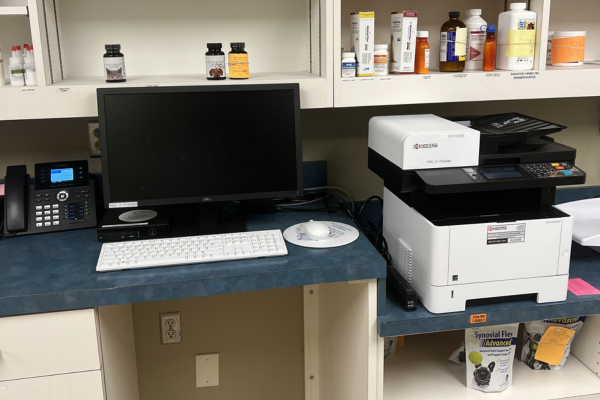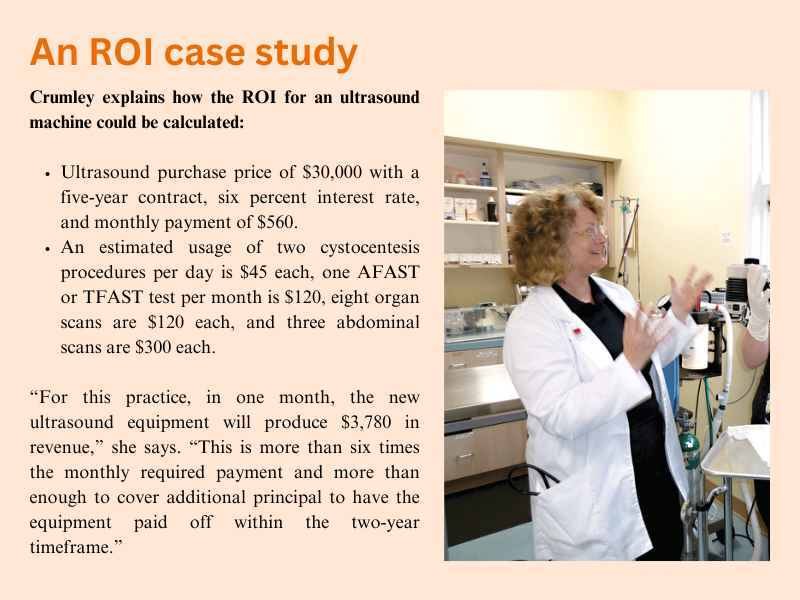
As every veterinarian knows, setting up and maintaining a practice entails spending thousands of dollars on equipment. Steel cages, exam tables, anesthesia machines, X-ray machines, animal scales, autoclaves, ventilators, dental units, IV pumps, computers and monitors. It all adds up, and equipment costs can run up to $100,000 or more when starting up a practice, says Kate Crumley, MS, DVM, lead start-up and acquisitions coach at Blue Heron Consulting in Danville, Ky.
For example, an anesthesia machine can cost about $6,000, an X-ray device around $15,000, and an ultrasound machine approximately $30,000. Once a practice is established, a veterinarian clinic can expect to spend $5,000 to $10,000 a year to add and replace equipment, says Dr. Crumley.
Despite the daunting costs, these expenses can be managed by taking a strategic and thoughtful approach. Here are tips from three veterinary practice consultants on stretching your equipment budget and getting the most mileage out of the equipment you buy.
On buying and leasing
A veterinarian can buy equipment outright with cash, borrow the money to purchase it, or lease it. Overall, it is better to buy than lease, but it all depends on the veterinarian’s individual situation.
“In general, it’s a better deal to buy,” says Karen E. Felsted, CPA, MS, DVM, CVPM, CVA, and owner of PantheraT Veterinary Management Consulting in Dallas, Tex. “However, sometimes a practice just doesn’t have the cash to do it, or they don’t want to borrow money. If you don’t have the cash to purchase equipment, a lease can be an acceptable alternative.”
As a rule of thumb, the monthly revenue generated by the equipment should be at least twice the monthly lease to make the purchase worthwhile, Dr. Crumley says. If the equipment is purchased with a loan, it should generally be paid off within two years.
Consider buying used for durable equipment
Stainless steel cages and exam tables can last for decades, and you might find good deals on cages and tables when a veterinarian retires, and a practice closes.
However, Dr. Felsted points out it is dicey to purchase used equipment with electronic components and software since those may be outdated and difficult to update and repair.
Talk to your accountant or financial adviser and get a return on investment estimate
Avoid the temptation to buy the latest technology simply to keep up with other practices. Before spending thousands of dollars on the newest and most sophisticated device, ask your accountant or financial adviser to first do a return on investment (ROI) analysis.
While an accountant should do the detailed ROI, a veterinarian can first do a rough estimate by:
- Determining how much the equipment will cost and the loan or lease amount needed.
- Estimating how often the equipment will be used and how the procedures will be priced.
- Calculating the monthly revenue generated and comparing it to monthly lease or loan payment. (See “An ROI case study”)
Felsted advises asking yourself the following questions before purchasing a new piece of equipment:
- How am I going to use this equipment?
- How many times a week will it be used?
- What will the practice charge for using this equipment?
- How will it be marketed?
- How will staff be trained to use it?
- Will it generate enough revenue to make the cost worthwhile?
Consider your client base as well, Felsted stresses. For instance, a practice serving clients with limited incomes who primarily want affordable preventive care will have a different ROI for an ultrasound compared with a practice targeted to affluent clients able and willing to spend more money on their pets.
Source at veterinary conferences
Perusing the vendor exhibits at veterinary conferences is a smart way to research and shop for equipment. Veterinarians can speak with sales representatives, ask questions, and try out the equipment for themselves.
“You can touch and feel the equipment, and you certainly get some great deals at conferences,” says Crumley.
Talking with other veterinarians in person or on online discussion boards is also helpful, she adds. Peers can share their experiences using different types of equipment and provides recommendations on vendors.
Look for bundling deals
Some veterinary laboratory vendors will pay for the cost of leasing equipment in exchange for the practice signing a contract to use that reference laboratory for a certain number of years, says Crumley.
“The big reference labs also have their fingers in the equipment field, and if you sign a contract–currently about seven years–that you will use their reference lab and make their quotas, which are fairly reasonable, they will cover the cost of your equipment lease,” she says.
Maintain your equipment
Just like cars and houses, veterinary equipment needs to be regularly maintained to keep it in good working condition. Every staff member who uses the equipment should be trained on how to properly use and maintain it, says Felsted. If the vendor offers a service package, take advantage of it and have the equipment checked and maintained regularly.

Technology cost-saving tips
Laboratory and surgical equipment are not the only equipment costs incurred by veterinary practices. Computers, monitors, routers, software, and printers are all needed to run a practice, and by taking a strategic approach, those costs can be reduced, as well.
The overall key to saving money on technology is “to be planful,” says William Lindus, director of operations for IT guru in Centennial, Colo., a technology consulting business for veterinary practices. He shared steps that veterinary practices can take to save money in the long run.
Ensure you have the infrastructure
Too often, a veterinary practice will purchase computers, monitors, and printers, later on discover that clinic lacks enough power outlets, ports, and routers to support it all. Lindus recommends consulting with a technology expert before making purchases of computers and related devices to ensure the building has sufficient technology infrastructure to support the equipment.
Buy business-grade equipment
While commercial-grade equipment is initially more expensive than off-the-shelf consumer versions, it is sturdier and more powerful and will last longer. For example, a consumer-grade laptop from a big box retailer may only last a year or so, while business-grade laptops will like last for three to five years before they need to be replaced.
“You may be paying a little more now, but in the long run you’ll save yourself a lot of money,” Lindus says. Further, he adds it is better to buy than lease computers and monitors so they can be replaced as needed instead of being locked into a contract.
Standardize your technology equipment and make sure devices are compatible
Practices can save money by buying all the same brand and type of laptops, monitors, and printers, instead of mix and matching them. This planful approach will enable practices to buy equipment in bulk and ensure all the components work together smoothly.
Another common mistake is for a practice to purchase a piece of equipment, such as an X-ray machine, without checking its compatibility with its computer system.
“It doesn’t play properly with the network as they set it up, and a $50,000 machine turns into a $50,000 coatrack while everyone is scrambling to get it up and running,” Lindus says.
Checking for compatibility even for smaller purchases like a label printer, will save time and money, he adds, so staff are not struggling to get the printer to work correctly with the computer software
Bonus tip: Get the warranty coverage
Having a warranty provides peace of mind, ensuring that unexpected breakdowns won’t lead to costly out-of-pocket expenses.
Julie A. Jacob is a communications professional and writer who often contributes to Veterinary Practice News. She lives in Wisconsin with her poodle.
References
- Hoeksema, A. “Opening a Profitable Vet Clinic – Numbers You Need to Know,” Projectionhub. 5 Jan. 2022. https://www.projectionhub.com/post/opening-a-profitable-vet-clinic-numbers-you-need-to-know
- Stephenson, J. “Veterinary Practice Technology Costs,” Simmons & Associates. 21 Feb. 2023. https://simmonsinc.com/ veterinary-practice-technology-costs/
